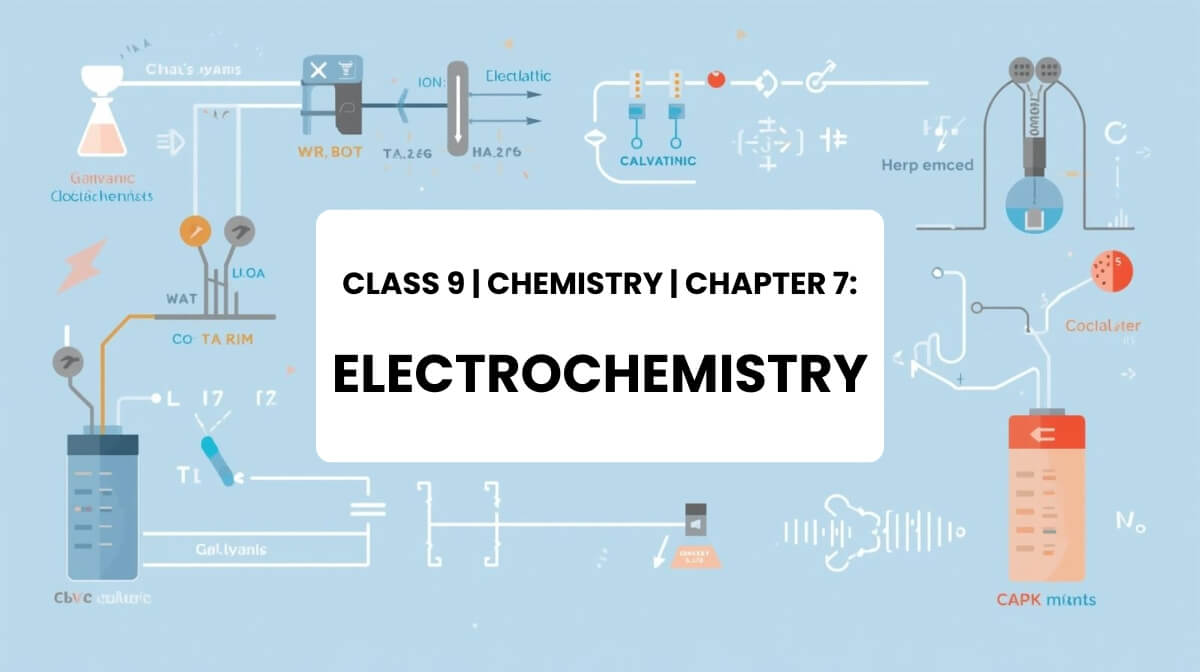Chapter 7 explains the chemical changes that occur when electricity passes through substances and the role of electrochemical processes in daily life. It covers electrolysis, electrolytes, galvanic cells, and practical applications like electroplating. These MCQs test the understanding of core concepts and problem-solving related to electrochemistry.
1. What is electrochemistry?
- A. Study of heat in chemical reactions
- B. Study of the relationship between electricity and chemical changes ✅
- C. Study of acids and bases
- D. Study of energy transfer
2. Which substance allows electric current to pass through by ion movement?
- A. Non-electrolyte
- B. Electrolyte ✅
- C. Semiconductor
- D. Insulator
3. In electrolysis of water, hydrogen gas is released at the:
- A. Anode
- B. Cathode ✅
- C. Both electrodes
- D. None
4. What is electroplating?
- A. Coating with paint
- B. Coating an object with a thin layer of metal using electricity ✅
- C. Melting metals together
- D. Painting with metallic colors
5. Which of these is a non-electrolyte?
- A. NaCl solution
- B. Distilled water ✅
- C. HCl solution
- D. KOH solution
6. In a galvanic cell, chemical energy is converted into:
- A. Heat energy
- B. Electrical energy ✅
- C. Sound energy
- D. Light energy only
7. The electrode where oxidation occurs is called:
- A. Anode ✅
- B. Cathode
- C. Negative terminal
- D. Electrolyte
8. Which metal is often used for electroplating jewelry?
- A. Iron
- B. Copper
- C. Gold ✅
- D. Zinc
9. In electrolysis, the positively charged electrode is called:
- A. Anode ✅
- B. Cathode
- C. Electrode plate
- D. Ion terminal
10. Which factor increases the rate of electroplating?
- A. Using less current
- B. Increasing current ✅
- C. Using pure water
- D. Removing electrolyte

